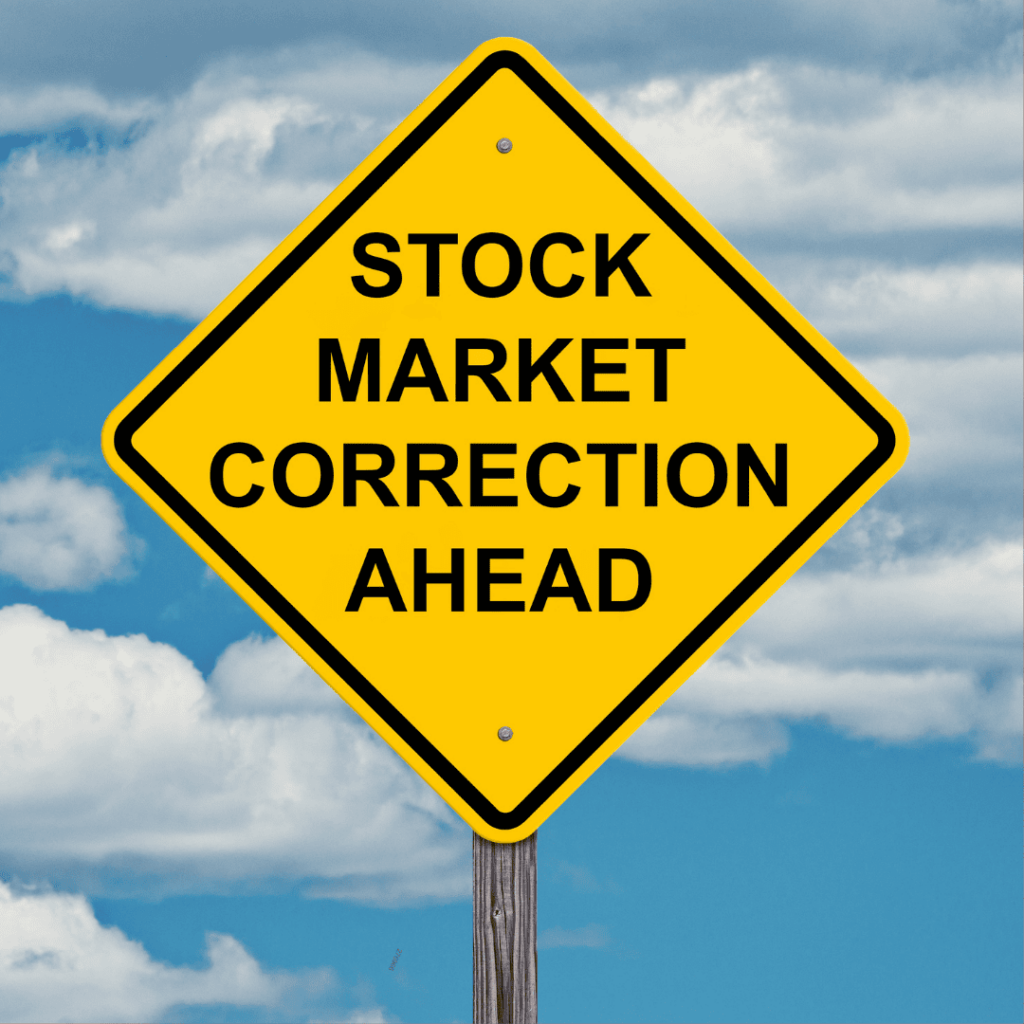
Market corrections are an unavoidable aspect of the investment journey, but they don’t have to disrupt your long-term financial aspirations. To begin, let’s define what constitutes a “market correction.” It’s typically described as a short-term decline in the stock market, where major indices experience a drop between 10% and 20% from their most recent highs.
Although it’s common to feel uneasy during periods of falling stock prices, seasoned investors recognize that such moments present unique opportunities—whether for capitalizing on undervalued assets, expanding knowledge, or making strategic, well-informed choices.
In this blog-post, we’ll delve into several practical approaches for transforming a market downturn into a chance to enhance both your portfolio and your investment approach.
Avoid the temptation to alter the past:
Trying to time the stock market during market corrections can be a risky strategy. While many try to buy low and sell high, such strategies often lead to missed opportunities or losses.
When the market drops, it’s easy to look back and think the warning signs were obvious. You might even feel like you should have sold when valuations seemed too high. But the truth is, valuations can stay stretched for quite some time, and predicting when a correction will happen is really tough—even for the pros.
Trying to time the market often means missing out on opportunities or locking in losses. It’s better to focus on making smart, forward-thinking choices based on your long-term investment goals and what you’re comfortable with, rather than second-guessing past decisions.
Adjusting Risk Tolerance:

Adjusting your risk tolerance during market corrections is an important step in navigating periods of volatility. Market downturns can be a great chance to reflect on how you feel about risk. Notice which investments are making you the most anxious and use that insight to fine-tune your strategy. If certain holdings are keeping you up at night, they might not be a good fit for your risk tolerance. By adjusting your portfolio to better match your comfort level with risk, you’ll be better prepared to handle future market ups and downs with more confidence.
Portfolio rebalancing during market corrections:
During market corrections, the balance of different assets in your portfolio—like stocks, bonds, and cash—can get off track. When the market is volatile, it’s easy to make hasty decisions out of fear. But a smarter approach is to view the correction as a chance to rebalance intentionally.
For instance, if your target allocation is 60% stocks and 40% bonds, a big drop in the stock market might change that balance to 50/50. By purchasing more stocks at the lower prices, you can bring your portfolio back in line with your goals and potentially benefit when the market bounces back. It’s more about sticking to a disciplined “buy low” strategy than trying to predict when the market will hit its lowest point.
Financial media pause during market corrections:
During market corrections, it can be tempting to stay glued to the news, but constantly consuming media coverage can increase anxiety and lead to hasty decisions. Many news outlets tend to sensationalize market fluctuations, which can cloud your judgment, and hence the 24×7 news cycle can be your worst enemy.
The more you immerse yourself in short-term financial news, the more likely you are to make impulsive decisions driven by emotions, which can negatively impact your long-term financial growth. Instead, consider taking a break from the constant stream of media and focus on learning about market cycles.

This pause will allow you to shift your mindset and explore the fascinating history of financial markets. By examining previous market trends, you’ll uncover valuable lessons that reveal the enduring patterns that have shaped investing over time. During periods of market instability, I encourage you to read books that captivate your interest. This will help distract you from the overwhelming media noise and allow you to stay calm and focused.
Portfolio adjustment during market dips:
Market corrections can be tough, but they also present a valuable opportunity to strengthen your portfolio. During times of market volatility, it’s a smart move to reassess your holdings to ensure they still align with your long-term objectives and risk tolerance.
Take a close look at investments that no longer fit your strategy and think about selling assets that are underperforming or overpriced. At the same time, consider investing in sectors or companies that were previously out of reach due to high valuations. Use market dips to reposition your portfolio with solid, reasonably priced investments. Remember, though, it’s important not to make impulsive decisions based on short-term fluctuations. By sticking to your long-term plan, you’ll be better equipped to handle the market’s ups and downs with confidence.
Importance of sticking to a long-term investment plan:
It might seem surprising, but one of the smartest approaches during a market correction is to resist the urge to make changes. History has proven that investors who hold steady through market dips often come out ahead when the market rebounds. In fact, the most promising opportunities to buy stocks at appealing prices often arise during times of heightened uncertainty. While it may feel like you need to “do something” when prices are dropping, the most prudent decision is often to stick to your plan and allow time to work its magic.
Conclusion:
Market corrections are a natural and inevitable part of the investment journey. These short-term fluctuations are just brief moments in the larger picture of your long-term financial goals. Over time, the stock market has consistently shown positive growth, even after enduring several corrections and bear markets.
Looking back, each downturn has proven to be a great opportunity to invest more and build wealth for the future. [link to article]. If you would like to see my other detailed article on whether investing during a recession is a good choice or not, check out my detailed guide on investing during a recession.
In summary, while market corrections can be unsettling, they also offer a chance to refine your investment strategy. By keeping your focus on long-term goals, adjusting your risk profile, and making thoughtful adjustments to your portfolio, you can turn volatility into opportunity.
Avoid the temptation to react impulsively to the constant buzz of media reports or short-term market changes. Instead, stick with a steady, long-term plan that aligns with your financial vision. With patience and a clear approach, you’ll be in a stronger position to weather the storm and thrive as markets recover.
You can follow me on Quora for more insights on investments, personal finance, money management, etc., as I regularly post on these topics.
Leave a comment below with your strategies for handling market downturns, so that I could also know your perspective of handling market corrections.





